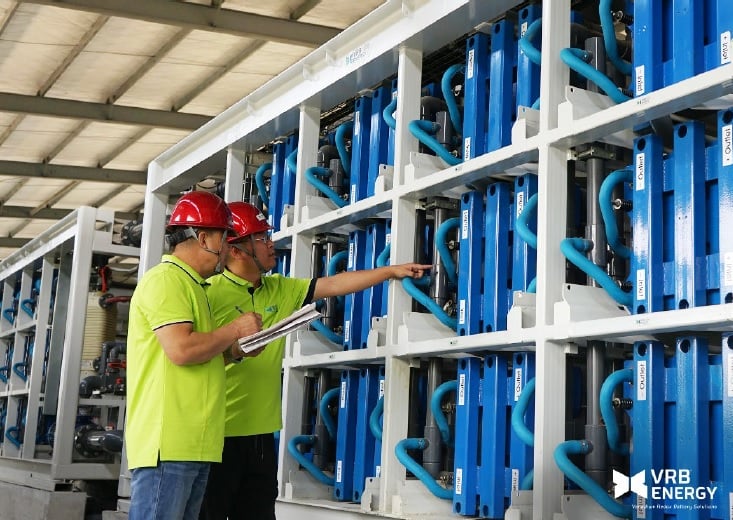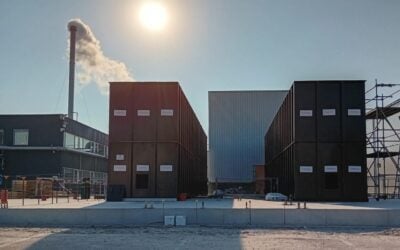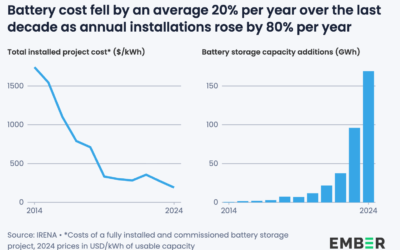
Vanadium redox flow battery (VRFB) manufacturer VRB Energy will supply a 500kWh energy storage system to a Chinese government scientific facility with the potential that it will be used to help develop the country’s decarbonisation policies.
Mineral exploration and resource development company Sparton Resources, an investor and owner of a minority stake in VRB Energy, announced yesterday that the China State Power Corporation has chosen to install the system at its National Photovoltaic and Energy Demonstration Experimental Center in Daqing, northeast China.
VRB Energy’s 125kW / 500kWh unit will be used as an evaluation and demonstration resource which Sparton claimed will assist the Peoples’ Republic of China (PRC) in formulating its policies toward industrial energy storage and technical standards as the country targets carbon neutrality by a 2060 deadline. The flow battery supplier was chosen through a competitive selection process.
Vanadium redox flow batteries offer the opportunity to de-couple the energy stored in electrolyte tanks from power driven by the battery cell stacks, meaning that large capacities of energy storage can be created without a big increase in capital investment cost. This means they are considered suitable for providing several hours of storage duration.
Try Premium for just $1
- Full premium access for the first month at only $1
- Converts to an annual rate after 30 days unless cancelled
- Cancel anytime during the trial period
Premium Benefits
- Expert industry analysis and interviews
- Digital access to PV Tech Power journal
- Exclusive event discounts
Or get the full Premium subscription right away
Or continue reading this article for free
The batteries are also considered rugged and durable over a long service lifetime and unlike lithium-ion batteries, the electrolyte does not degrade, meaning performance is retained and the liquid can be reused in other batteries after decommissioning. Current barriers to their adoption include a higher upfront cost compared to lithium, despite possible lower lifetime costs, as well as lack of policies in most of the world which value their long-duration properties or present energy market opportunities.
Since there are also fewer VRFBs deployed in the field than lithium-ion batteries, and lithium is also used in the electric transport industry, the long-duration technology is considered less bankable. Many of the above are widely considered by many to be dynamics which will change as grids target higher and higher shares of renewable energy and more and more VRFB project developers and manufacturers can show data from their deployed systems. In March this year, US Secretary of Energy Jennifer Granholm said that flow batteries were a promising option for grid-scale storage applications and earlier this week announced a push to support long-duration energy storage technology development, deployment and commercialisation. China meanwhile announced a strategy of building several very large-scale VRFB facilities around the country in 2018, with VRB Energy among companies involved in bidding for projects.
The Daqing battery installation as well as construction of the demonstration and experiment facility are scheduled for completion in late September. The centre is set to evaluate technology performance and promote innovation, with the scope of its work to include evaluating integration of solar and battery which could guide the development of large-scale PV and storage projects.
Canada-headquartered VRB Energy actually began as a China-based company called Pu Neng before minerals exploration and development group High Power Exploration bought an 82% stake. With the company having deployed about 30MWh of VRFBs worldwide to date, this makes the Daqing project small in scale but potentially of strategic importance. Now on its Gen3 iteration of its VRFB product, VRB Energy retains offices and manufacturing facilities in China and the company was selected for a 100MW / 500MWh project in Hubei Province, which follows the deployment of a smaller-scale demonstration project.
VRB has also signed an agreement with local authorities and partners in Hubei to build a 1,000MW per annum factory and R&D centre in the province. The company recently netted a US$24 million investment commitment from BCPG, a Thailand-headquartered renewable energy developer.





